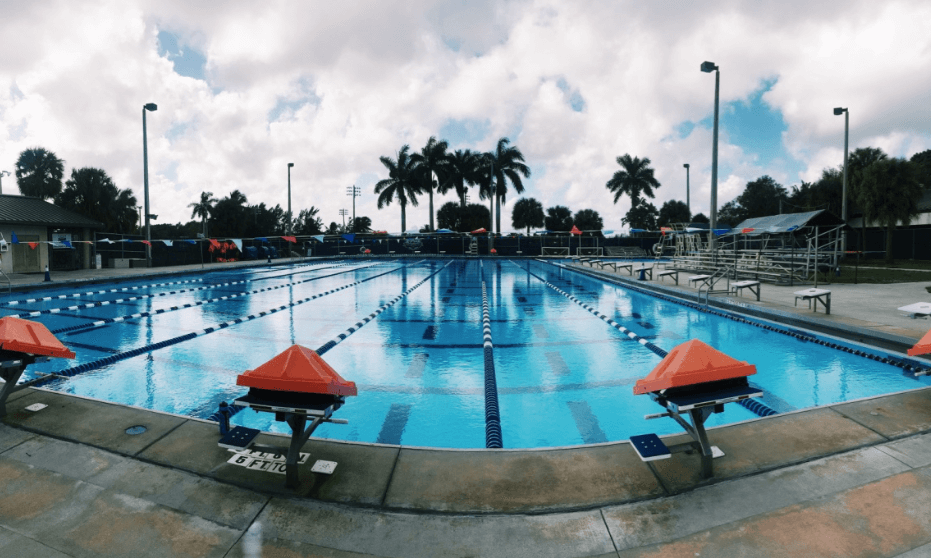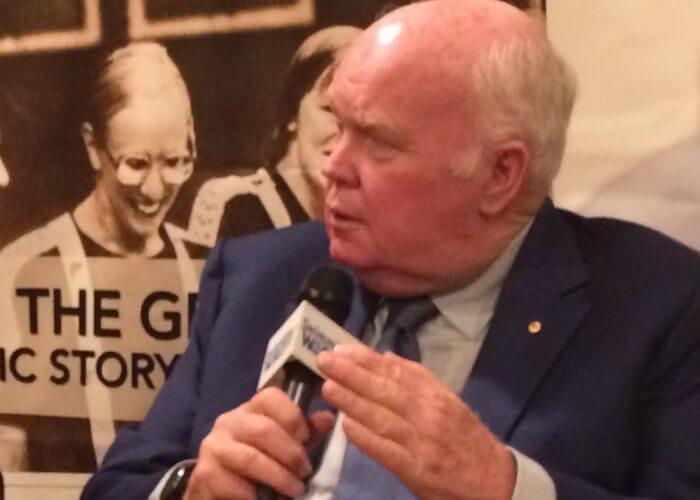Training Strategy: What Is Reverse Periodization? How Does It Work? (Part I)

Training Strategy: What Is Reverse Periodization? How Does It Work? (Part I)
This month, Swimming World explores the concept of reverse periodization—its acceptance, application and place in modern-day aquatic training.
Any discussion of periodization, reverse and otherwise, requires definition: Classic (or traditional) periodization in swimming is accepted as initial, long distance training at relatively low (below anaerobic threshold) levels followed by an increase in volume and intensity leading to a max race-pace effort while experiencing a reduction in volume.
By any definition, the goal is preparation for peak performance at a desired moment. In the simplest terms, reverse periodization (RP) is a reversal of that traditional training model.
In each method, athletes proceed through preseason, aerobic, anaerobic and race-specific periods, maximizing training adaptations in planned macro, meso and micro cycles.
***********
Volumes have been written on general athletic training principles. And any coach, kinesiology-educated or not, can benefit from a perusal of works by sport scientists, including Han Selye, Orjan Madsen, Jan Olbrecht, Leo Metayev, Jan Svedenhag, just to name a few.
Swim training literature written by sport scientists and fellow coaches, while not as plentiful, remains required reading for anyone looking to expand one’s aquatic knowledge. Spoiler alert: healthy differences of opinions exist. Regardless, diverse discussions merit consideration and perhaps experimentation for the curious.
Even less has been written on reverse periodization, which at its core, is a pedagogical model. And what studies exist vary in methodology, sample sizes and scientific particulars. Where there is universal agreement is that the subject requires more study.
A good starting place is a scholarly tract entitled, “Reverse Periodization for Improving Sports Performance: A Systematic Review” by Jose M. Gonzalez-Rave, Fernando Gonzalez-Mohino, Victor Rodrigo-Carranza and David B. Pyne in Sports Medicine Open. Published in April 2022, the paper examined 925 studies and winnowed them down to 11 before conducting a systematic review.
The authors “sought to identify the main characteristics of reverse periodization and the influence of training volume and periodization models on enhancing physiological measures and sports performance.” Two hundred athletes were included in the study, which revealed that reverse periodization does not provide superior performance improvements in swimming, running, muscular endurance, maximum strength or maximal oxygen uptake, compared to traditional or block periodization.
The study’s conclusion stated “that reverse periodization is no more effective than other forms of periodization in improving sports performance. More comparative studies on this alternative version of periodization are required to verify its effectiveness and utility across a range of endurance sports.” The study’s three key points determined that reverse periodization:
• Is no more effective than other forms of periodization in improving sports performance, muscular endurance, maximum strength or maximal oxygen uptake.
• Likely induces similar improvements to a traditional model in shorter events such as the 100-meter swimming event.
• And that more comparative studies of periodization models in endurance sports require careful planning of experimental design, longer study periods and, where appropriate, matching of training volumes and intensities.
Says one of the studies’ authors, David Pyne (Canberra, Australia): “There are only a few scientific studies on this approach, and most of our knowledge is based on hard-earned experience of coaches, swimmers and support staff on the pool deck. This review indicates that reverse periodization is equally effective (or in other words, no more effective than other forms of training), so is an option to consider.
“No real surprise, it comes down to the experience of the coach in optimizing the progression of individual swimmers on the basis of their history, training background, age, event specialization and rates of both adaptation and learning. Reverse periodization can be more tolerable for swimmers as training intensity (and load) are managed as fatigue accumulates.”
The authors did not reject reverse periodization as a training model, but suggested more research is needed to provide a better understanding of the benefits of reverse training periodization in comparison with other models.
SUCCESS STORIES
While many coaches choose not to employ it, RP has advocates who have enjoyed success.
“In swimming, the adoption of (reverse periodization) is not new. In fact all one would have to do today is pick up a copy of Kurt Wilke and Orjan Madsen’s book, ‘Coaching the Young Swimmer,’ published in 1987, to see a basic form of this in action,” says former Carmel Swim Club mentor and now GAIN Network director Chris Webb.

Bill Sweetenham – Photo Courtesy: SWTV
“This style of training was adopted by British Swimming as a primary part of its curriculum in recent years, in part because of the great work done by coaches like Bill Sweetenham—former director of British Swimming and an Australian coaching legend—as well as by Stephan Widmer, most famously known for coaching great Australians Libby Trickett, Leisel Jones, Christian Sprenger and Jessicah Schipper,” says Webb.
Sweetenham was British Swimming’s national performance director from November 2000 to September 2007. His tenure was marked by medal success at the World Championships. Prior to the 2004 Athens Olympic Games, he set Great Britain on a course of marked improvement. Using a system he dubbed, “Anaerobic Approach to Training,” Britain won as many medals at the 2001, 2003 and 2005 World Swimming Championships as it had in all previous World Championships dating back to 1973.
Because of his philosophy and willingness to share, Sweetenham developed strong personal and professional bonds with coaches like Don Talbot, Bill Nelson, Dick Hannula and Eddie Reese. Sweetenham also influenced Australian coaches Ken Wood, Janelle Pallister and Michael Bohl (coach of Stephanie Rice, Emma McKeon and Lani Pallister), who experimented with training that emphasized speed development throughout the season.
“Gregg Troy and Michael both trained the Olympic winners in the men’s and women’s 100 front crawl from within programs of 400-to-200-based philosophies,” Sweetenham says.
IN PRACTICE TODAY
In practice, very few coaches are applying reverse periodization in its purest form—i.e., as a precise reversal of classic periodization training. Why? As Webb observes, “I don’t think people understand what RP actually is. That’s common with most anything we do—i.e., USRPT.
“Unless you have read Dr. Rushall’s papers, you aren’t doing his specific methodology because what coaches do is take pieces of something and say they are doing it, but that’s not the case. So a lot of people think RP is USRPT. RP also gets misused and misunderstood because it is oddly used in the triathlon world—because of training in winter in northern climes,” says Webb.
“I follow a lot of what Stephan Widmer and Bill Sweetenham did with British Swimming,” adds Webb. “Basically, it was a lot of technique and fast swimming at first—technique and speed development at the beginning of the season. Technique is the foundation of speed. You have to do technique and then speed because you can’t endure a quality you don’t already possess. If you start doing all endurance work early in the season, you don’t possess the requisite quality (speed) to do it.
“Then you move from capacity training, then layer on aerobic in reverse order. Once you build a foundation of speed and technique, you slowly build all the aerobic capacity and metabolisms on top of that—always using your speed as a checkpoint throughout the season to make sure you are not getting buried.”
CAN IT WORK?
Webb believes, “It is an effective training method for high school and club teams with March championships. The training methodology is sound; it is effective, measurable, reliable and repeatable. Using this method fits all those standards. I won junior national and high school titles using this methodology.”
Mike Novell, coach of the Fort Collins Area Swim Team in Colorado, has mentored junior national and junior Pan Pac record holders. “Swimming fast at the beginning of the season is beneficial for club and high school-age athletes for a couple of reasons—the first being teaching,” he says. “In my experience, kids swim differently when at race-pace speed, and that is where the skills we are trying to develop exist. It is difficult to do that if we are spending the first phases of the season swimming only subaerobic and threshold-type speed. I mostly work with year-round athletes, but I would imagine that would be compounded for kids who only were swimming three to six months per year.
“The second reason is that developing athletes improve at different rates, and allowing them to bring all their energy systems along early in the season gives kids a chance to go fast early and mid-season, which might make the difference in qualifying for the state meet or whatever. I believe the thing that makes them go really fast at the end of the season versus the beginning is the periodization of the strength and conditioning, combined with the rest in the pool,” says Novell.
So…comes the question, “Why isn’t everybody doing it?” Answer: “Because it is not easy and not familiar. People do what is familiar and easy. It requires a little bit of time—and it’s not the only effective way of doing something.”
Webb references the high-volume culture of Mark Schubert, Sherm Chavoor and others in the late 1960s and ’70s. Enormously successful with that model, America produced Olympic and world champions who became poster children for the mega-yardage approach that became a popular training model for decades.
AGREEMENT
Researchers and coaches agree that while RP will work for swimmers training for events 200 and up, “It’s more effective for a larger group of athletes 200 meters and down,” says Webb. “Still, the traditional model can’t be overlooked. Sometimes you’ll do a hybrid.”
Michael J. Stott is an ASCA Level 5 coach, golf and swimming writer. His critically acclaimed coming-of-age golf novel, “Too Much Loft,” is in its second printing, and is available from store.Bookbaby.com, Amazon, B&N and book distributors worldwide.
************
A STARTER’S BIBLIOGRAPHY
Here is “A Starter’s Bibliography” for those who would like to better understand the principle of reverse periodization:
• “Reverse Periodization for Improving Sports Performance: A Systematic Review” by Jose M. Gonzalez-Rave, Fernando Gonzalez-Mohino, Victor Rodrigo-Carranza and David B. Pyne. Sports Medicine Open (2022).
• “The Effects of Two Different Swimming Training Periodization on Physiological Parameters at Various Exercise Intensities” by Vicente Javier Clemente-Suárez, Athanasios Dalamitros, João Ribeiro, Ana Sousa, Ricardo J. Fernandes, J. Paulo Vilas-Boas. European Journal of Sports Science (2017).
• “Thoughts on Reverse Periodization” by Sergei Beliaev. https://supersportsystems.com/thoughts-on-reverse-periodization/
• “Step-by-Step USRPT Planning and Decision-Making Processes and Examples of USRPT Training Sessions, Microcycles, Macrocycles and Technique Instruction” (Version 1.1.1) by Brent S. Rushall, Ph.D., professor emeritus, San Diego State University. Swimming Science Bulletin, Number 47.



